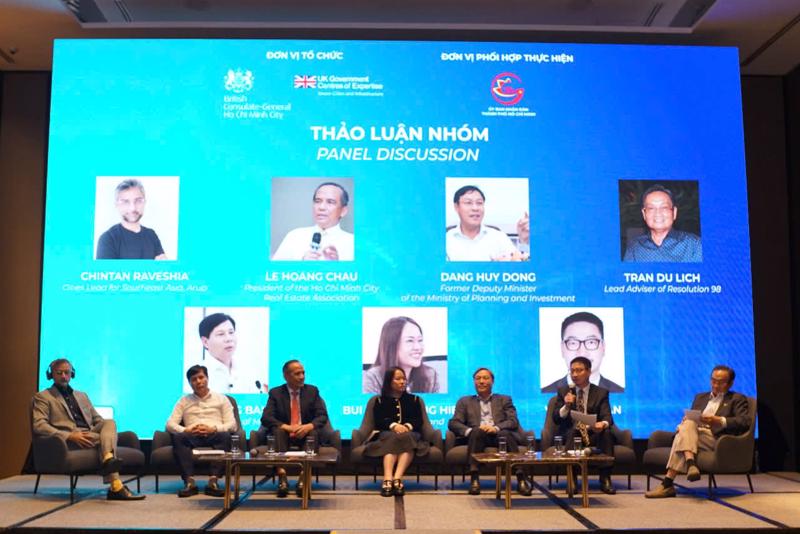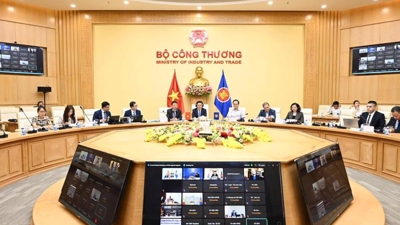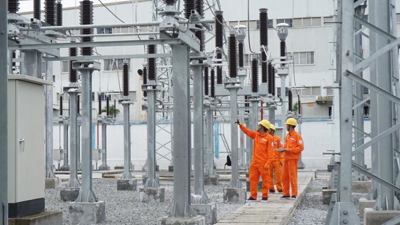UK-Vietnam cooperation paves the way for green urban areas with TOD model in Ho Chi Minh City
The Ho Chi Minh City People's Committee coordinated with the British Consulate-General in Ho Chi Minh City to organize a workshop on urban development oriented towards public transport (TOD).

At the “Workshop on solutions for implementing transit-oriented development (TOD) in Ho Chi Minh City" held on February 25 by the British Consulate-General in Ho Chi Minh City in collaboration with the City’s People’s Committee, leaders of the southern city emphasized the importance of TOD urban development as this will be an important foundation for the cohesion between traffic planning and urban planning, in order to build a modern infrastructure system.
The workshop is part of the UK Government’s Green Cities and Infrastructure Program (GCIP) and a program to support Vietnam with green and sustainable development.
Mr. Bui Xuan Cuong, Vice Chairman of the Ho Chi Minh City People's Committee, said that as a major economic center and the most populous urban area in the country, HCM City's planning traffic and urban areas requires rapid, harmonious, connected, and synchronous development of infrastructure.
In particular, urban development in the direction of taking public transport as the center, in order to promote the process of green and sustainable growth for Ho Chi Minh City as well as the whole region, focus must be placed on public transport during urban development.
According to the plan, Ho Chi Minh City must complete 355 km of urban railway by 2035. At the same time, the City has decided to deploy 11 TOD locations along the urban railway and Ring Road 3 in the period between 2024 - 2028. Of which, 9 locations will be deployed in 2024 - 2025.
"TOD development will create conditions to improve land use efficiency, reduce traffic congestion, improve the living environment and optimize the public transport system," Mr. Cuong added.
Mr. Nguyen Anh Tuan, Head of the Technical Infrastructure Management Devision (under HCMC Department of Construction), said that the City is urgently applying specific mechanisms and policies to develop the urban railway network according to the National Assembly's Resolution on piloting a number of specific mechanisms and policies to develop the urban railway system in Hanoi and HCMC, approved on February 19.
According to Mr. Tuan, the new planning has determined the City's development space and new growth drivers, including the central urban area, Thu Duc City; at the same time, accelerating the implementation of the TOD model associated with urban embellishment.
Currently, the potential land fund for development according to the TOD model in the City is 32,000 ha of agricultural land, vacant land that does not affect or has little impact on the current population and about 9,000 ha of industrial land, and production land that can be converted in functional areas.
In addition, the City also identified approximately 23,000 ha of existing, renovated, and renovated residential areas or existing functional areas that can be encouraged for redevelopment associated with TOD.
British Consul General in Ho Chi Minh City Alexandra Smith expressed her belief that the UK’s support in the transport sector and the building of the TOD platform will contribute to building a modern and sustainable urban rail system in HCM City.
"The UK has been leading in technology and innovation in urban development, including TOD, which helps cities optimise their public transport networks and reduce congestion," she added. "I believe that the development and implementation of TOD will play a critical role in improving the quality of HCMC’s public transport infrastructure and reducing the City’s carbon footprint."
During the Workshop, UK experts also shared valuable experiences and practical recommendations for building a strategic vision for Ho Chi Minh City’s urban development under the TOD model. This will be a solid foundation for Vietnam to continue to build modern, livable and sustainable urban areas.
The Workshop demonstrates the UK’s ongoing commitment to support Vietnam in developing a sustainable public transport system, urging the smart cities development and accelerating the transition of the economy to Net Zero.
Public transit-oriented urban development (TOD) is an urban development method combined with public transit, encouraging high-density urban development through the use of land around transport hubs to promote public transport, and reduce dependence on personal vehicles that support sustainable urban growth.
For Ho Chi Minh City, TOD would be an important strategy to manage rapid urbanization, reduce traffic congestion, improve air quality, optimize land use, mobilize revenue to improve access to public transport, improve the quality of urban life and contribute to economic growth.
Through the UK Government’s Green Cities and Infrastructure Program (GCIP), UK experts will work with Ho Chi Minh City People’s Committee and the Ho Chi Minh City Management Authority for Urban Railways (MAUR) to apply TOD principles to the City’s urban planning, build financial mechanisms through land value capture (LVC), as well as propose solutions to start TOD as soon as possible.







